Nghiên cứu khả thi đầu tư cho thiết kế hệ thống đèn đường đô thị bền vững
Giới thiệu: Tại sao đầu tư vào đèn đường năng lượng mặt trời của thành phố lại quan trọng
Bối cảnh và mục tiêu
Các dự án đèn đường năng lượng mặt trời đô thị đang trở thành thành phần cốt lõi của chiến lược phát triển bền vững đô thị. Nghiên cứu khả thi này nhằm mục đích cung cấp cho các nhà quy hoạch đô thị, nhà tài trợ dự án và kỹ sư chiếu sáng một khuôn khổ rõ ràng và thiết thực để đánh giá các khoản đầu tư vào chiếu sáng đường phố năng lượng mặt trời — bao gồm các yếu tố thúc đẩy chi phí, lựa chọn thiết kế kỹ thuật, hiệu suất dự kiến, kịch bản hoàn vốn và rủi ro triển khai. Mục tiêu là đảm bảo các quyết định phù hợp với mục tiêu tiết kiệm năng lượng, giảm phát thải carbon và cải thiện an toàn công cộng của thành phố.
Các yếu tố chính để lựa chọn hệ thống đèn đường năng lượng mặt trời cho thành phố
Độc lập năng lượng và giảm thiểu carbon
Việc lắp đặt đèn đường năng lượng mặt trời đô thị giúp giảm mức tiêu thụ điện lưới và lượng khí thải nhà kính. Ở nhiều vùng khí hậu có số giờ nắng cao điểm trung bình từ 4–6 kWh/m2/ngày, đèn đường năng lượng mặt trời có thể cung cấp điện ổn định cho đèn LED qua đêm với các tấm pin và pin có kích thước phù hợp, giúp giảm hóa đơn tiền điện đô thị và tải lưới điện trong giờ cao điểm.
Các thành phần kỹ thuật và cân nhắc thiết kế
Các thành phần hệ thống cốt lõi
Một hệ thống đèn đường năng lượng mặt trời đô thị điển hình bao gồm: tấm pin quang điện (PV), đèn LED, bộ lưu trữ năng lượng pin, bộ điều khiển thông minh (khuyến nghị MPPT), phần cứng cột và giá đỡ, và các mô-đun truyền thông tùy chọn để giám sát từ xa. Mỗi lựa chọn linh kiện đều ảnh hưởng đến chi phí đầu tư, độ tin cậy và bảo trì.
Kích thước PV năng lượng mặt trời
Kích thước tấm pin phụ thuộc vào lượng bức xạ mặt trời tại địa phương, nhu cầu năng lượng của đèn và yêu cầu về khả năng tự chủ. Việc triển khai điển hình sử dụng các tấm pin có công suất từ 50W cho đèn đường LED công suất thấp đến 300W+ cho đèn có lumen cao hơn. Ví dụ, một đèn LED 40W (hoạt động ~10 giờ/đêm) cần khoảng 400 Wh/ngày; với 4,5 giờ nắng cao điểm và tổn thất hệ thống (sạc/xả, nhiệt độ), một tấm pin 120–160W là một phương án kích thước hợp lý ở nhiều địa điểm.
Đèn LED và công suất phát sáng
Đèn LED đô thị hiện đại cung cấp hiệu suất 100–200 lm/W. Đối với các ứng dụng trên đường bộ và đường phố chính, độ rọi mục tiêu duy trì thường dao động từ 10–30 lux tùy thuộc vào loại đường. Thiết kế đèn đường năng lượng mặt trời đô thị phải chỉ định lumen trên mỗi trụ và quang học của đèn để đáp ứng các tiêu chuẩn (ví dụ EN 13201 hoặc các tiêu chuẩn địa phương) đồng thời giảm thiểu nhu cầu năng lượng.
Lưu trữ pin và tính tự chủ
Pin phải có khả năng tự chủ đủ cho những ngày nhiều mây và biến động theo mùa. Pin Lithium Sắt Phosphate (LiFePO4) hiện đang được ưa chuộng cho các hệ thống đô thị nhờ tuổi thọ chu kỳ cao hơn, độ sâu xả sâu hơn và chi phí bảo trì thấp hơn so với pin axit chì kín. Dung lượng pin điển hình trên mỗi cột dao động từ 400 Wh cho đèn đường nhỏ đến hơn 5 kWh cho các tuyến đường chính yêu cầu tự chủ nhiều đêm. Mục tiêu thiết kế chung là tự chủ từ 2–4 ngày tùy thuộc vào khả năng chịu rủi ro.
Điều khiển và tính năng thông minh
Bộ điều khiển thông minh (MPPT) và hệ thống đo từ xa cho phép lập lịch điều chỉnh độ sáng từ hoàng hôn đến bình minh, chiếu sáng thích ứng và phát hiện sự cố từ xa — tất cả đều giúp giảm chi phí vận hành và cải thiện thời gian hoạt động. Các dự án đèn đường năng lượng mặt trời đô thị nên xem xét các phương thức truyền thông (LoRaWAN, NB-IoT, 4G) như một phần của kế hoạch vận hành.
Cấu trúc chi phí và mô hình tài chính
Các thành phần chi tiêu vốn (CapEx)
Chi phí đầu tư (CapEx) bao gồm tấm pin mặt trời, đèn LED, pin, cột điện, bộ điều khiển, lắp đặt, công trình dân dụng và quản lý dự án. Chi phí đầu tư (CapEx) điển hình cho mỗi cột điện thay đổi đáng kể tùy theo khu vực và thông số kỹ thuật; phạm vi ước tính thận trọng là 800–2.500 đô la cho mỗi cột điện đối với các công trình lắp đặt vừa và nhỏ và 2.500–6.000 đô la trở lên đối với các công trình lắp đặt đô thị có thông số kỹ thuật cao với tấm pin, pin và hệ thống thông tin liên lạc lớn hơn. Chi phí nhân công, giấy phép và móng tại địa phương ảnh hưởng đáng kể đến con số cuối cùng.
Chi phí hoạt động (OpEx) và bảo trì
Chi phí vận hành (OPEx) cho các dự án đèn đường năng lượng mặt trời đô thị thường thấp hơn so với các dự án tương tự được kết nối lưới điện — hóa đơn tiền điện thấp hơn và ít bảo trì hơn nếu sử dụng pin LiFePO4 và đèn LED chất lượng cao. Chi phí bảo trì hàng năm dự kiến (vệ sinh, kiểm tra pin định kỳ, thay thế nhỏ) có thể dao động từ 10 đến 80 đô la mỗi cột mỗi năm, tùy thuộc vào khả năng tiếp cận và cấu trúc hợp đồng.
So sánh chi phí hoàn vốn và vòng đời
Thời gian hoàn vốn phụ thuộc vào chi phí điện tiết kiệm được, các ưu đãi và chu kỳ thay thế. Ở những vùng nắng ấm với giá điện lưới trung bình, thời gian hoàn vốn cho các dự án đô thị thường rơi vào khoảng 3–8 năm. Tuổi thọ hữu ích của các hệ thống chất lượng cao (tấm pin 25+ năm, đèn LED 7–15 năm, pin LiFePO4 8–12 năm tùy thuộc vào độ sâu chu kỳ) nên được đưa vào mô hình chi phí vòng đời.
So sánh hiệu suất và độ tin cậy
Đèn đường năng lượng mặt trời của thành phố so với đèn lưới điện thông thường như thế nào
Bảng sau đây tóm tắt những điểm khác biệt chung về hiệu suất và chi phí giữa đèn đường năng lượng mặt trời của thành phố và đèn đường LED hòa lưới thông thường.
| Hệ mét | Đèn đường năng lượng mặt trời của thành phố | Đèn đường LED nối lưới thông thường |
|---|---|---|
| Chi phí trả trước cho mỗi cột | 800–6.000 đô la (tùy thuộc vào thông số kỹ thuật và pin) | 500–2.500 đô la (thiết bị cố định + kết nối) |
| Chi phí năng lượng hàng năm | ~$0 (không có điện lưới) + bảo trì nhỏ | 30–300 đô la (tùy thuộc vào mức năng lượng và số giờ) |
| Hoàn vốn điển hình | 3–8 năm (thay đổi tùy theo mức độ bức xạ và năng lượng) | Không áp dụng (chỉ tiết kiệm so với hệ thống HPS cũ) |
| Tần suất bảo trì | Thấp đến trung bình; có thể cần thay pin | Trung bình; chấn lưu/tế bào quang điện ít phổ biến hơn với đèn LED |
| Khả năng phục hồi | Khả năng phục hồi cao khi không có lưới điện; hoạt động trong thời gian mất điện | Phụ thuộc vào độ tin cậy của lưới điện |
| Tuổi thọ điển hình | Tấm pin 25+ năm; Đèn LED 7–15 năm; pin 5–12 năm | Đồ đạc 7–15 năm; các thành phần được gắn vào lưới điện |
Đánh giá và giảm thiểu rủi ro
Rủi ro chung
Các rủi ro chính bao gồm kích thước không chính xác (dẫn đến đêm tối), lựa chọn pin kém (tuổi thọ pin ngắn), phá hoại/trộm cắp, kế hoạch bảo trì không đầy đủ và giả định tài chính quá lạc quan. Các yếu tố khí hậu (thời tiết cực lạnh hoặc mây mù kéo dài) cũng có thể ảnh hưởng đến hiệu suất và cần được phân tích theo khu vực.
Chiến lược giảm thiểu
Biện pháp giảm thiểu bao gồm lập ngân sách năng lượng thận trọng (tăng kích thước tấm pin một chút), chỉ định pin LiFePO4 bền chắc, sử dụng đồ đạc và cột chống phá hoại, triển khai giám sát từ xa để phát hiện lỗi nhanh chóng và bao gồm dự phòng trong các mô hình tài chính để thay thế và mở rộng quy mô.
Mô hình tài chính và lựa chọn mua sắm
Các phương pháp tiếp cận mua sắm và tài chính chung
Các thành phố có thể áp dụng một số mô hình: mua trực tiếp (CapEx), hợp đồng hiệu suất năng lượng (EPC), mô hình trả tiền khi tiết kiệm, quan hệ đối tác công tư (PPP) hoặc tài trợ từ nhà cung cấp. Việc lựa chọn phụ thuộc vào ngân sách thành phố, khẩu vị rủi ro và quy định mua sắm. EPC và PPP có thể chuyển rủi ro hiệu suất sang các nhà cung cấp tư nhân, đồng thời cho phép các thành phố tránh được các khoản thanh toán trả trước lớn.
Lộ trình triển khai: Từ thí điểm đến triển khai toàn thành phố
Cách tiếp cận từng bước
Bắt đầu với một dự án thí điểm: chọn các tuyến phố tiêu biểu, xác nhận thiết kế và kiểm soát, và đo lường hiệu suất trong 6–12 tháng. Sử dụng kết quả thí điểm để tinh chỉnh các mô hình năng lượng, tài liệu mua sắm và kế hoạch bảo trì. Mở rộng quy mô theo từng giai đoạn, đảm bảo chuỗi cung ứng sẵn sàng, đội ngũ bảo trì được đào tạo và nền tảng giám sát tích hợp.
Số liệu trường hợp và tình huống ví dụ
Ví dụ về tình huống tài chính — đường phố chính của thành phố có quy mô trung bình
Giả định: Đèn LED 50W (tấm pin 150W, pin LiFePO4 1,2 kWh cho 2 đêm tự động), chi phí lắp đặt 1.500 đô la/cột, hoạt động 10 giờ/đêm, 365 ngày/năm, tiết kiệm điện lưới 0,12 đô la/kWh. Ước tính tiết kiệm năng lượng hàng năm trên mỗi cột ≈ 400 Wh/đêm × 365 = 146 kWh/năm → tiết kiệm chi phí ≈ 17,5 đô la/năm. Khi tính đến việc tránh được kết nối mạng lưới và tăng giá điện trong tương lai, cộng với lợi ích bảo trì và vòng đời thấp hơn, tổng tiết kiệm hiệu quả hàng năm và giá trị từ khả năng phục hồi sẽ hoàn vốn trong khoảng 5–8 năm tùy thuộc vào các ưu đãi và phương pháp bảo trì.
Danh sách kiểm tra mua sắm cho các dự án đèn đường năng lượng mặt trời của thành phố
Các mặt hàng mua sắm thiết yếu
1) Thông số kỹ thuật về hiệu suất (độ sáng, độ đồng đều, khả năng tự chủ), 2) Bảo hành linh kiện (tấm pin 10–25 năm, đèn LED 5–10 năm, pin 3–10 năm tùy thuộc vào hóa chất), 3) Tiêu chí thử nghiệm và chấp nhận, 4) Giám sát từ xa và truy cập dữ liệu, 5) Kế hoạch bảo trì và phụ tùng thay thế, 6) Trách nhiệm rõ ràng về phá hoại và bảo hiểm.
Tại sao Tiêu chuẩn, Kiểm tra và Chứng nhận lại quan trọng
Đảm bảo chất lượng và độ tin cậy lâu dài
Hãy chọn nhà cung cấp có sản phẩm đáp ứng các tiêu chuẩn quốc tế (CE, IEC, UL nếu có) và cung cấp kết quả thử nghiệm độc lập cho các mô-đun quang điện, pin và đèn LED. Chứng nhận giúp giảm thiểu rủi ro hiệu suất và hỗ trợ các đơn xin tài trợ hoặc tài trợ.
Tiêu điểm nhà cung cấp: Queneng Lighting — Điểm mạnh cho các dự án đô thị
Năng lực và chứng nhận của Queneng
Công ty TNHH Công nghệ Chiếu sáng Queneng Quảng Đông (thành lập năm 2013) chuyên sản xuất đèn đường năng lượng mặt trời, đèn chiếu điểm năng lượng mặt trời, đèn sân vườn và bãi cỏ năng lượng mặt trời, đèn trụ năng lượng mặt trời, tấm pin quang điện, bộ nguồn và pin ngoài trời di động, cũng như thiết kế dự án chiếu sáng và sản xuất đèn LED di động. Queneng đã phát triển thành nhà cung cấp cho các công ty niêm yết và các dự án kỹ thuật, đồng thời hoạt động như một nhà cung cấp.kỹ thuật chiếu sáng bằng năng lượng mặt trờiViện nghiên cứu giải pháp. Công ty báo cáo các đợt kiểm toán ISO 9001 và TÜV và sở hữu các chứng chỉ quốc tế như CE, UL, BIS, CB, SGS và MSDS — tất cả đều là những dấu hiệu quan trọng của hệ thống sản xuất và chất lượng phù hợp với nhu cầu mua sắm của thành phố.
Ưu điểm sản phẩm cho các dự án đèn đường năng lượng mặt trời đô thị
Queneng Lighting cung cấp đa dạng sản phẩm phù hợp với nhu cầu triển khai đô thị: Đèn đường năng lượng mặt trời tích hợp pin quang điện (PV) và pin được thiết kế riêng cho các mức độ chiếu sáng đô thị; Đèn chiếu điểm năng lượng mặt trời cho chiếu sáng điểm nhấn; Đèn sân vườn và bãi cỏ năng lượng mặt trời cho công viên; Đèn trụ năng lượng mặt trời cho cổng ra vào và khu vực dành cho người đi bộ; Tấm pin quang điện năng lượng mặt trời được thiết kế riêng cho các thiết bị chiếu sáng độc lập; và nguồn điện di động cùng pin cho chiếu sáng tạm thời hoặc khẩn cấp. Đội ngũ R&D và năng lực sản xuất của chúng tôi cho phép cung cấp các giải pháp tùy chỉnh (kích thước tấm pin và pin, bộ điều khiển thông minh, truyền thông) và kiểm soát chất lượng chặt chẽ hơn, giảm thiểu rủi ro hiệu suất dự án và đơn giản hóa hợp đồng bảo hành và bảo trì cho các đô thị.
Giám sát, Bảo trì và Quản lý Vòng đời
Thực hành tốt nhất về hoạt động
Triển khai bảng điều khiển giám sát để theo dõi thời gian hoạt động, trạng thái sạc pin và sản lượng điện. Lên lịch vệ sinh định kỳ các mảng pin quang điện (PV) và kiểm tra tình trạng pin định kỳ. Sắp xếp các phụ tùng quan trọng (bộ điều khiển, pin, mô-đun LED) theo khu vực để giảm thời gian ngừng hoạt động. Ghi lại dự báo thay thế vòng đời trong mô hình tài chính để ngân sách thành phố có thể lên kế hoạch thay thế pin hoặc đèn LED giữa vòng đời.
Lợi ích về môi trường và xã hội
Lợi ích cộng đồng và khí hậu
Các dự án đèn đường năng lượng mặt trời đô thị giúp giảm lượng khí thải CO2, giảm nhu cầu đi dây gây ô nhiễm ánh sáng và cải thiện khả năng phục hồi trong thời gian mất điện lưới. Các dự án này có thể hỗ trợ việc làm tại địa phương cho việc lắp đặt và bảo trì, đồng thời đóng góp vào các cam kết bền vững rõ ràng, thu hút doanh nghiệp và đầu tư.
Những câu hỏi thường gặp (FAQ)
Thời gian hoàn vốn điển hình cho các dự án đèn đường năng lượng mặt trời của thành phố là bao lâu?
Thời gian hoàn vốn thường dao động từ 3 đến 8 năm, tùy thuộc vào nguồn năng lượng mặt trời, giá điện được miễn, chi phí đầu tư trên mỗi cột điện và các ưu đãi hiện có. Ở những khu vực có giá điện cao hoặc trợ cấp hào phóng, thời gian hoàn vốn có thể nhanh hơn.
Các thành phần của hệ thống có tuổi thọ bao lâu?
Tuổi thọ điển hình: Tấm pin quang điện thường bảo hành 25 năm với công suất 80% trở lên; Đèn LED thường bảo hành 7–15 năm tùy thuộc vào giờ hoạt động; Pin LiFePO4 thường có tuổi thọ 8–12 năm trong chu kỳ bảo dưỡng bảo thủ; Pin axit chì kín có tuổi thọ ngắn hơn (3–6 năm).
Làm thế nào để chọn kích thước tấm pin và pin?
Xác định kích thước tấm pin và pin dựa trên mức tiêu thụ trung bình hàng ngày, số ngày hoạt động độc lập cần thiết, số giờ nắng cao điểm tại địa phương và tổn thất hệ thống. Một phương pháp thận trọng là tăng kích thước tấm pin lên 10–25% và thiết kế thời gian hoạt động độc lập từ 2–4 ngày tùy thuộc vào khả năng chịu đựng rủi ro khí hậu.
Đèn đường năng lượng mặt trời của thành phố có dễ bị phá hoại không?
Rủi ro tồn tại giống như bất kỳ tài sản công nào. Các biện pháp giảm thiểu bao gồm lắp đặt thiết bị chống phá hoại, lắp đặt an toàn, sử dụng thiết kế tích hợp (ít bộ phận tháo rời) và các chương trình giám sát hoặc gắn kết cộng đồng. Giám sát từ xa cũng giúp phát hiện và thay thế lỗi nhanh hơn.
Hệ thống đèn đường năng lượng mặt trời của thành phố có thể được mở rộng hoặc kết nối mạng sau này không?
Có — các tấm panel dạng mô-đun, giá đỡ tiêu chuẩn và bộ điều khiển tích hợp sẵn cho phép triển khai theo từng giai đoạn và tích hợp vào các nền tảng thành phố thông minh. Hãy lập kế hoạch hệ thống dây điện và kiến trúc dữ liệu ngay từ đầu để dễ dàng mở rộng quy mô sau này.
Làm thế nào để đảm bảo tài chính cho dự án?
Các lựa chọn bao gồm ngân sách thành phố, trái phiếu xanh, hợp đồng hiệu suất năng lượng, tài trợ từ nhà cung cấp hoặc PPP. Việc chứng minh hiệu suất thí điểm và mô hình chi phí vòng đời vững chắc giúp đảm bảo nguồn vốn cho vay hoặc tài trợ.
Những bước đầu tiên nhanh chóng dành cho một thành phố quan tâm đến các dự án thí điểm là gì?
1) Xác định các tuyến phố tiêu biểu cho thí điểm, 2) tiến hành kiểm toán nguồn năng lượng mặt trời và tải trọng, 3) xây dựng thông số kỹ thuật hiệu suất và tài liệu mua sắm, 4) yêu cầu đề xuất từ các nhà cung cấp được chứng nhận (tìm kiếm CE/UL/ISO/TÜV), 5) xác định các chỉ số KPI về giám sát và bảo trì.
Kết luận: Con đường thực tế hướng tới chiếu sáng đô thị bền vững
Tóm tắt có thể thực hiện được
Các dự án đèn đường năng lượng mặt trời đô thị có thể mang lại lợi ích kinh tế lâu dài, bền vững và thân thiện với môi trường khi được thiết kế với kích thước hợp lý, linh kiện chất lượng (pin LiFePO4, đèn LED hiệu suất cao và mô-đun quang điện được chứng nhận), giám sát từ xa và kế hoạch bảo trì bài bản. Hãy sử dụng các dự án thí điểm để xác thực các giả định, thuê các nhà cung cấp giàu kinh nghiệm để đảm bảo bảo hành và cung cấp bằng chứng, đồng thời cấu trúc tài chính phù hợp với chu kỳ ngân sách của thành phố. Với thiết kế và quy trình mua sắm chu đáo, các dự án đèn đường năng lượng mặt trời đô thị mang đến một con đường tiết kiệm chi phí và bền vững hướng đến những con đường xanh hơn, an toàn hơn.

Bạn còn thắc mắc gì về sản phẩm hoặc dịch vụ của chúng tôi không?
Tin tức nóng hổi mới nhất mà bạn có thể thích

Khám phá cách các tấm pin mặt trời cung cấp năng lượng cho đèn đường, tìm hiểu công nghệ đằng sau quá trình chuyển đổi năng lượng mặt trời, hệ thống lưu trữ và cách đèn đường chạy bằng năng lượng mặt trời đang cách mạng hóa các giải pháp chiếu sáng đô thị và nông thôn.

Tìm hiểu cách thức hoạt động của đèn đường năng lượng mặt trời lai AC, ưu điểm, nhược điểm, hoạt động của hệ thống trong điều kiện ánh sáng mặt trời yếu và lý do tại sao công nghệ lai lý tưởng cho các khu vực có ánh sáng mặt trời không ổn định.

Các thành phố trên khắp thế giới đang ngày càng áp dụngđèn đường năng lượng mặt trờinhư một phần trong chiến lược phát triển đô thị của họ. Chi phí năng lượng tăng cao, nhu cầu về cơ sở hạ tầng bền vững và các sáng kiến xanh của chính phủ đang thúc đẩy các thành phố chuyển đổi từ chiếu sáng đường phố truyền thống sangđèn đường năng lượng mặt trời LED tiên tiến.
Queneng Lighting cung cấp cho các thành phốgiải pháp chiếu sáng bằng năng lượng mặt trời tiết kiệm chi phí, hiệu quả năng lượng và bền bỉ, đảm bảo không gian công cộng an toàn và bền vững.

Trong những năm gần đây,mua đèn đường năng lượng mặt trời cho các thành phốđã trở thành một xu hướng ngày càng phổ biến trên toàn cầu. Chính quyền địa phương đang chịu áp lực phải giảm chi tiêu công, thúc đẩy năng lượng xanh và xây dựng cộng đồng an toàn hơn. Đèn đường năng lượng mặt trời cung cấp một giải pháp đáng tin cậy, tiết kiệm chi phí và bền vững, đáp ứng những nhu cầu này. Là nhà sản xuất đèn đường năng lượng mặt trời hàng đầu, Queneng Lighting đã hỗ trợ nhiều dự án đô thị trên toàn thế giới bằng các giải pháp tùy chỉnh và tiết kiệm năng lượng.
Câu hỏi thường gặp
Hệ thống APMS
Hệ thống APMS cho phép chiếu sáng liên tục trong những ngày mưa kéo dài như thế nào?
APMS của Queneng được trang bị công nghệ chịu đựng ngày mưa giúp đảm bảo chiếu sáng liên tục trong thời gian nhiều mây kéo dài, duy trì nguồn điện ổn định trong điều kiện thiếu ánh nắng mặt trời và lý tưởng để chiếu sáng ở những vùng xa xôi.
Đèn đường năng lượng mặt trời Lufeng
Đèn đường năng lượng mặt trời Lufeng có thể hoạt động vào mùa đông không?
Có, đèn đường năng lượng mặt trời Lufeng được thiết kế để hoạt động quanh năm, kể cả trong mùa đông. Chúng được trang bị tấm pin mặt trời hiệu suất cao, tiếp tục thu thập năng lượng mặt trời ngay cả trong điều kiện lạnh hoặc nhiều mây. Đèn cũng được chế tạo để chịu được nhiệt độ đóng băng và cung cấp ánh sáng đáng tin cậy trong mọi mùa.
Đèn đường năng lượng mặt trời Luxian
Những lợi ích chính của việc sử dụng đèn đường năng lượng mặt trời Luxian để chiếu sáng ngoài trời là gì?
Đèn đường năng lượng mặt trời Luxian cung cấp một số lợi ích chính, bao gồm tiết kiệm năng lượng, thân thiện với môi trường và độc lập với lưới điện. Chúng sử dụng năng lượng mặt trời để cung cấp năng lượng cho đèn LED, giảm chi phí điện trong khi vẫn cung cấp ánh sáng đáng tin cậy, chất lượng cao cho không gian ngoài trời. Cấu trúc bền bỉ và nhu cầu bảo trì thấp khiến chúng trở nên lý tưởng để sử dụng lâu dài trong nhiều môi trường ngoài trời khác nhau.
Kiến thức cơ bản về pin và các thuật ngữ cơ bản
Tiêu chuẩn chung cho pin là gì?
Pin thông dụng theo tiêu chuẩn quốc gia: pin niken-kim loại hydride tiêu chuẩn GB/T15100_1994, GB/T18288_2000; pin lithium-ion tiêu chuẩn GB/T10077_1998, YD/T998_1999, GB/T18287_2000.
Ngoài ra, tiêu chuẩn chung về pin còn có tiêu chuẩn JIS C của Tiêu chuẩn công nghiệp Nhật Bản về pin.
IEC là Ủy ban Kỹ thuật Điện Quốc tế (International Electrical Commission), là tổ chức tiêu chuẩn hóa toàn cầu bao gồm các ủy ban điện quốc gia, có mục đích thúc đẩy tiêu chuẩn hóa các lĩnh vực điện và điện tử trên thế giới. Tiêu chuẩn IEC là tiêu chuẩn do Ủy ban Kỹ thuật Điện Quốc tế xây dựng.
Điểm tham quan và khu nghỉ dưỡng
Đèn năng lượng mặt trời có thể giúp giảm chi phí năng lượng cho khu nghỉ dưỡng không?
Có, đèn năng lượng mặt trời có thể giảm đáng kể chi phí năng lượng bằng cách loại bỏ nhu cầu sử dụng điện lưới. Đầu tư vào đèn năng lượng mặt trời sẽ được đền đáp về lâu dài thông qua việc tiết kiệm hóa đơn tiền điện.
Pin và Phân tích
Những lý do nào có thể khiến pin và bộ pin không thể xả được?
2) Sạc không đủ hoặc không sạc được;
3) Nhiệt độ môi trường quá thấp;
4) Hiệu suất xả thấp. Ví dụ, khi xả dòng điện lớn, pin thông thường không thể xả điện vì tốc độ khuếch tán vật liệu bên trong không theo kịp tốc độ phản ứng, khiến điện áp giảm mạnh.
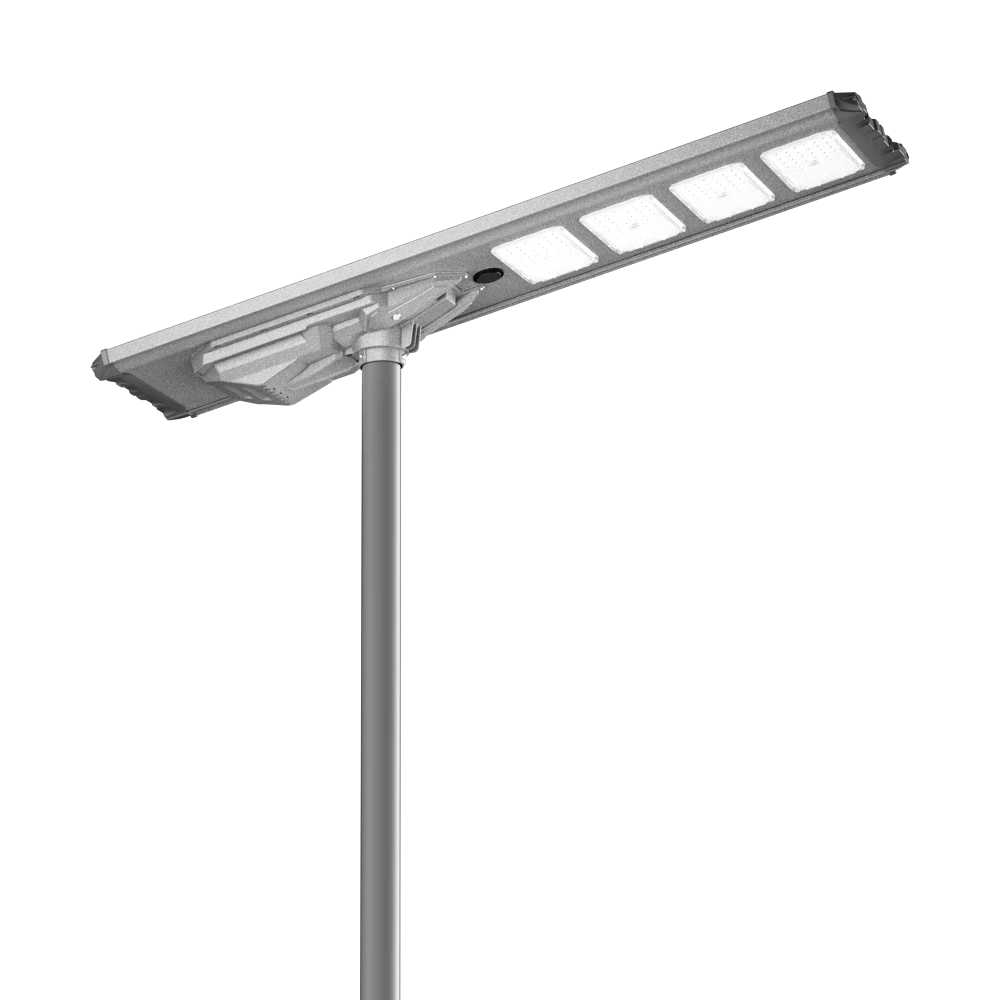
Đèn đường năng lượng mặt trời Lufei của Queneng cung cấp giải pháp chiếu sáng ngoài trời bền bỉ, tiết kiệm năng lượng. Đèn đường năng lượng mặt trời này cung cấp ánh sáng đáng tin cậy, giảm chi phí năng lượng và tác động đến môi trường. Lý tưởng cho không gian ngoài trời, Lufei đảm bảo an toàn và an ninh.
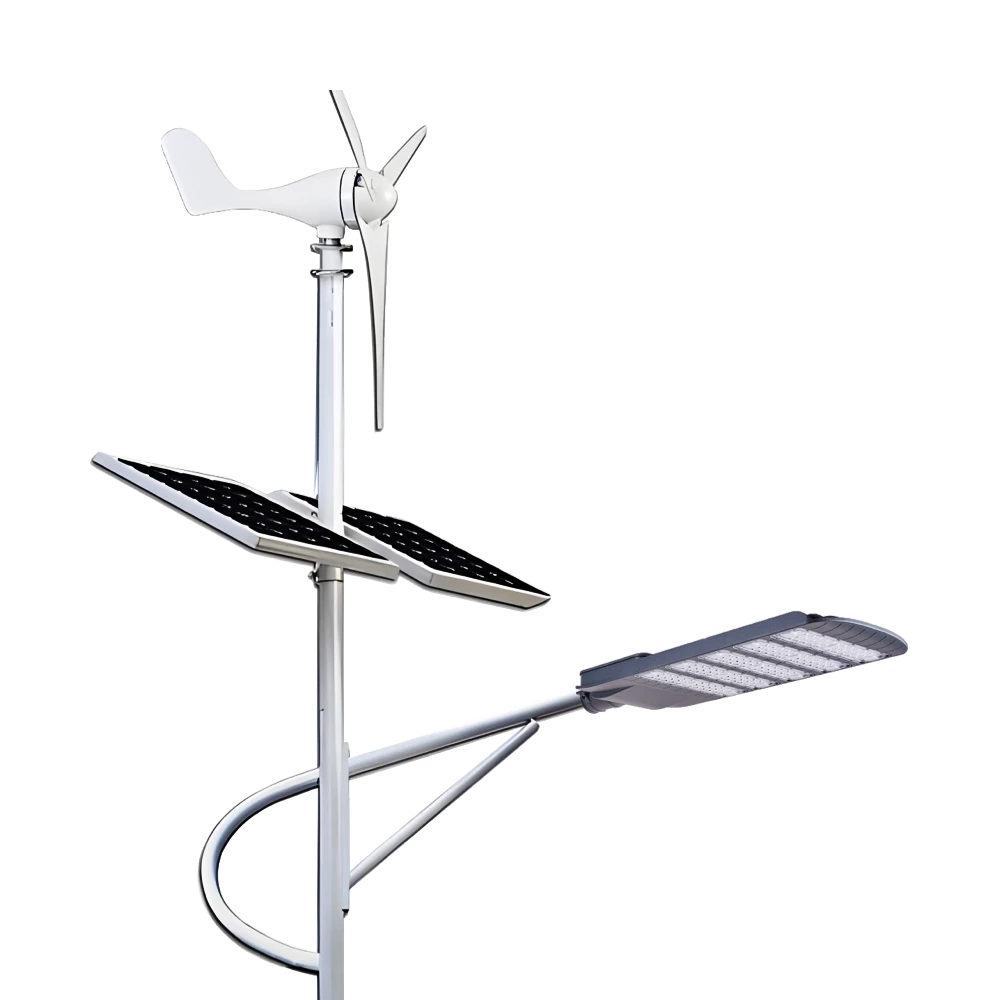
Đèn đường năng lượng mặt trời ngoài trời Queneng Lufeng Wind Energy LED cung cấp khả năng chiếu sáng hiệu suất cao, thân thiện với môi trường. Những đèn đường LED tiết kiệm năng lượng này khai thác năng lượng mặt trời và năng lượng gió để tạo ra các giải pháp chiếu sáng ngoài trời bền vững, tiết kiệm chi phí.
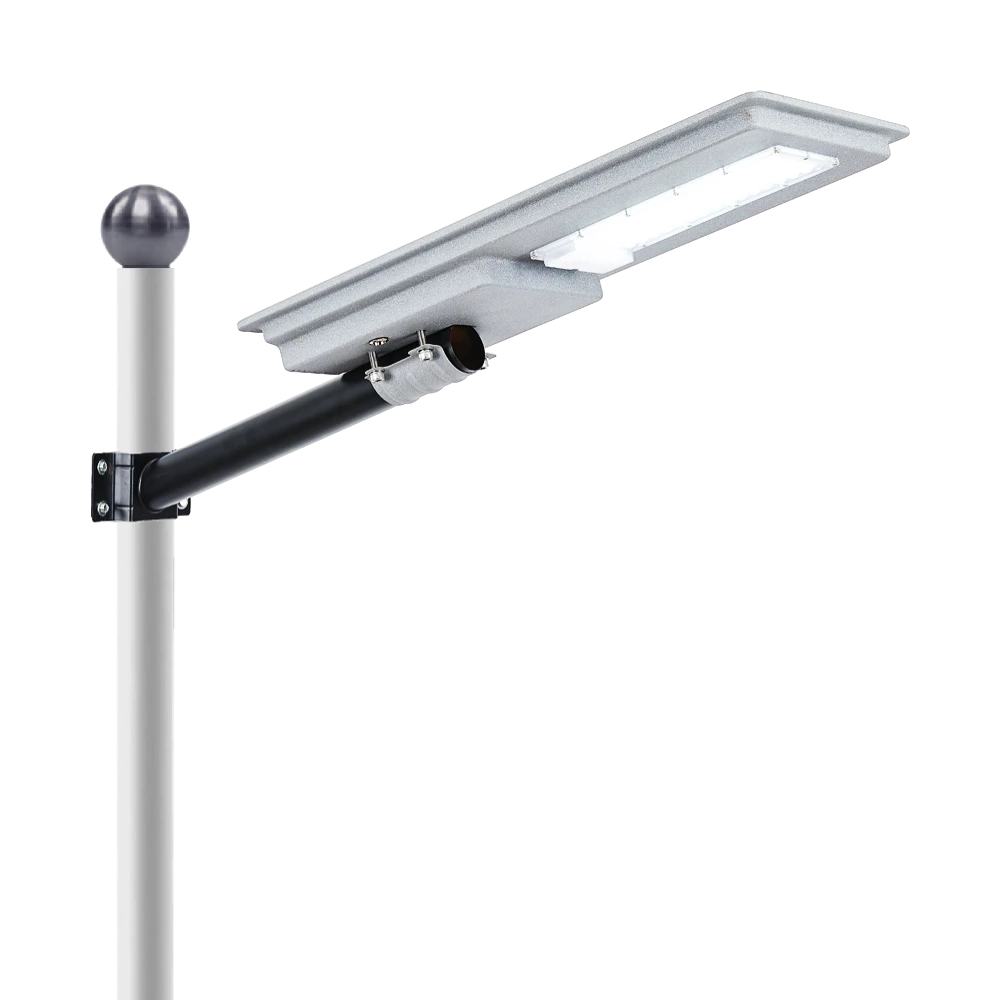
Giới thiệu Đèn đường năng lượng mặt trời Luda của Queneng: sản phẩm chiếu sáng ngoài trời tối ưu. Đèn đường năng lượng mặt trời bền bỉ, thân thiện với môi trường này có hiệu suất cao và bền vững. Hoàn hảo để chiếu sáng đường phố, lối đi và không gian công cộng, sản phẩm này khai thác năng lượng mặt trời để giảm chi phí năng lượng và tác động đến môi trường.
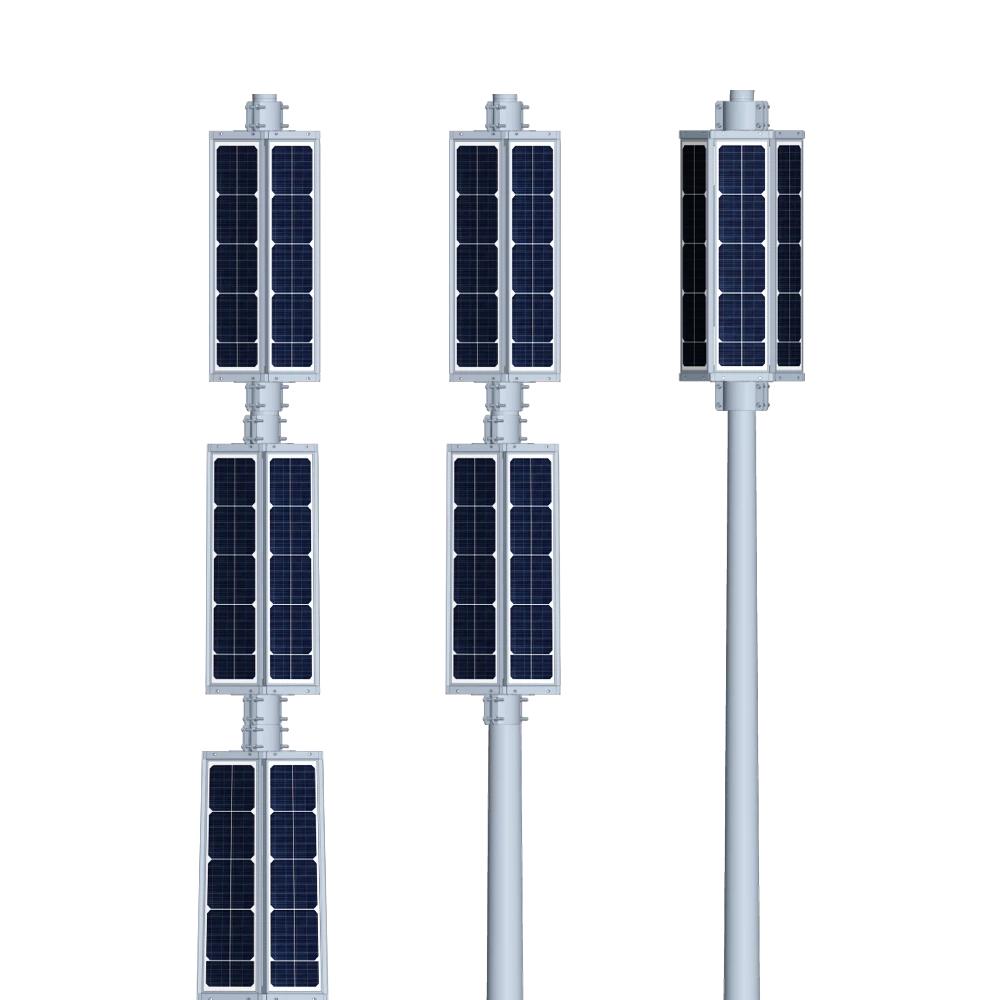
Đèn đường năng lượng mặt trời Luzhou của Queneng cung cấp đèn LED ngoài trời bền vững, tiết kiệm năng lượng. Được cung cấp năng lượng từ năng lượng mặt trời, đây là giải pháp tiết kiệm chi phí và thân thiện với môi trường để chiếu sáng đường phố và lối đi. Đèn đường năng lượng mặt trời LED đáng tin cậy và bền bỉ.
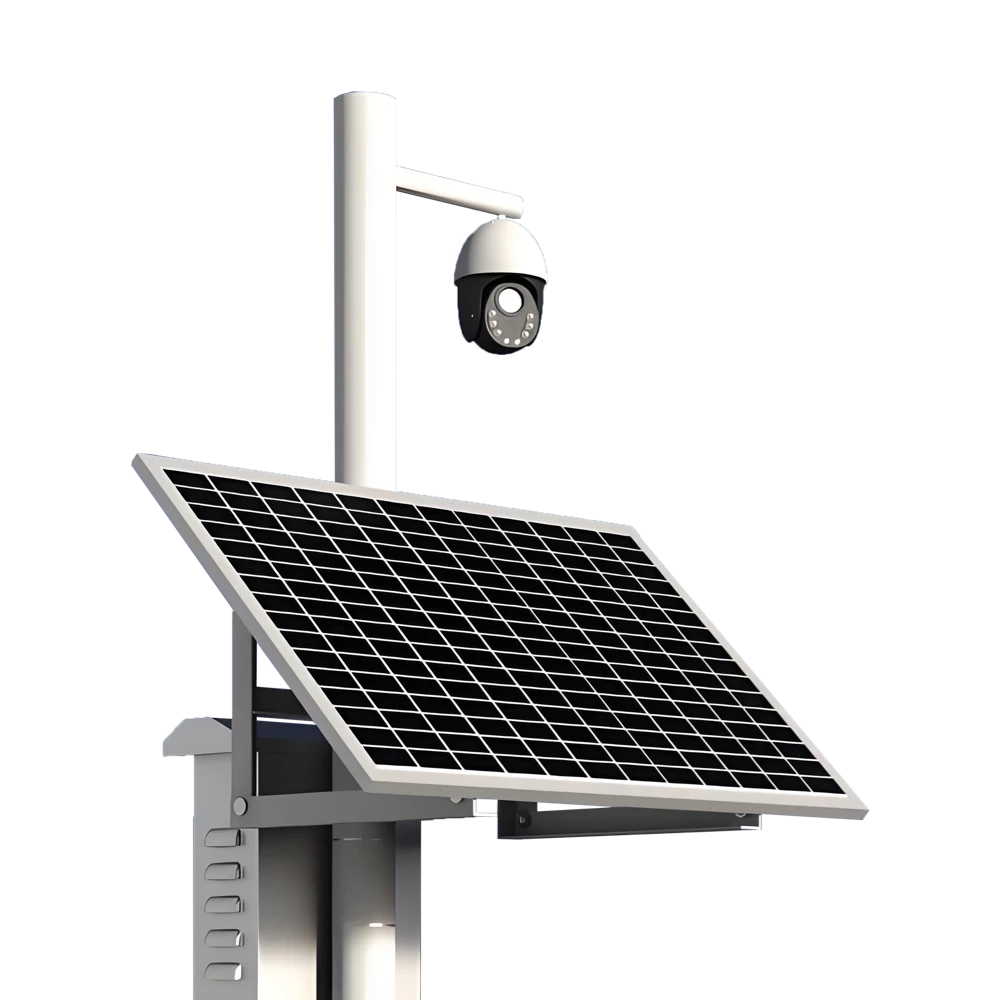
Đèn đường năng lượng mặt trời cung cấp giải pháp tiết kiệm năng lượng, thân thiện với môi trường để chiếu sáng không gian ngoài trời.
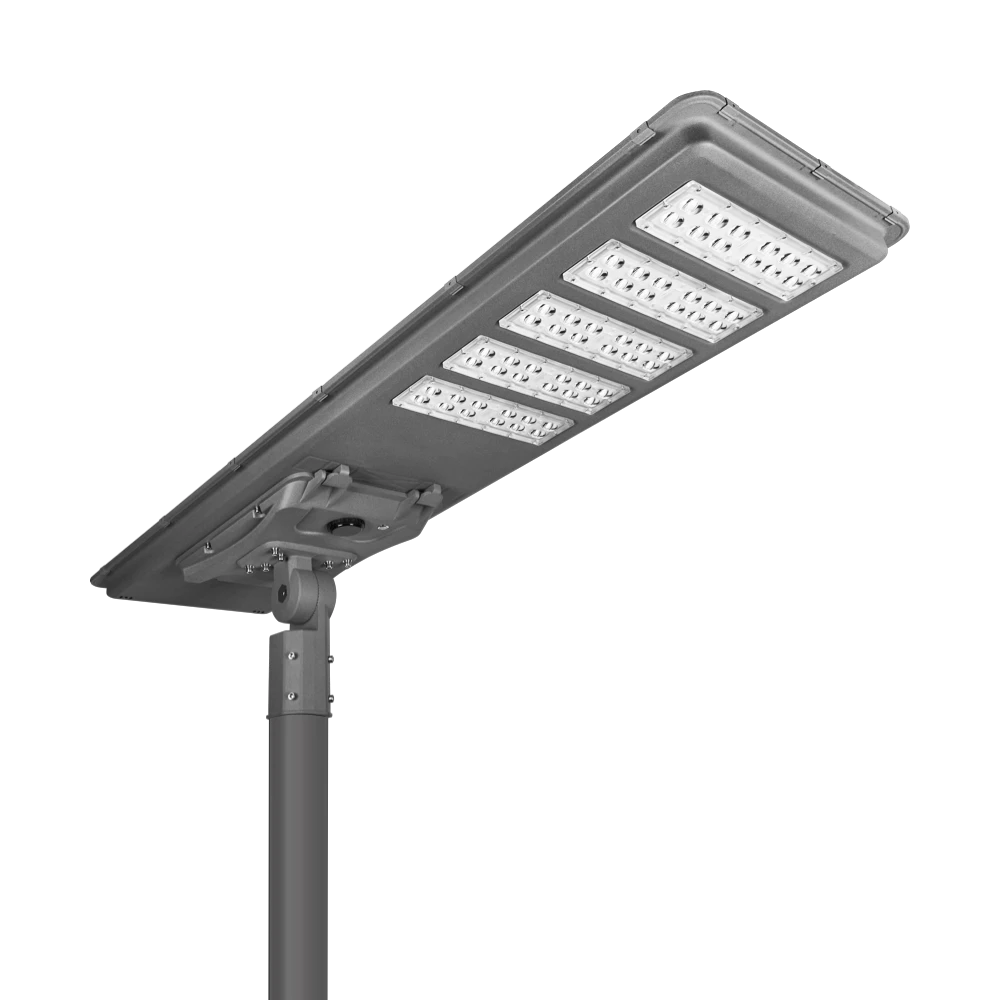
Khám phá Đèn đường năng lượng mặt trời hiệu suất cao Lulin của Queneng, một giải pháp chiếu sáng ngoài trời bền bỉ và tiết kiệm năng lượng. Được thiết kế để đạt hiệu quả và độ tin cậy, sản phẩm này khai thác năng lượng mặt trời để chiếu sáng bền vững cho đường phố và lối đi. Tối ưu hóa không gian ngoài trời của bạn ngay hôm nay với công nghệ chiếu sáng đường phố năng lượng mặt trời tiên tiến của Queneng.
Đội ngũ chuyên nghiệp của chúng tôi sẵn sàng trả lời mọi câu hỏi và cung cấp hỗ trợ cá nhân cho dự án của bạn.
Bạn có thể liên hệ với chúng tôi qua điện thoại hoặc email để tìm hiểu thêm về các giải pháp chiếu sáng bằng năng lượng mặt trời của Queneng. Chúng tôi mong muốn được hợp tác với bạn để thúc đẩy các giải pháp năng lượng sạch!
Hãy yên tâm rằng quyền riêng tư của bạn rất quan trọng đối với chúng tôi và mọi thông tin bạn cung cấp sẽ được xử lý một cách bảo mật tối đa.
Bằng cách nhấp vào 'Gửi yêu cầu ngay', tôi đồng ý cho Queneng xử lý dữ liệu cá nhân của tôi.
Để xem cách rút lại sự đồng ý của bạn, cách kiểm soát dữ liệu cá nhân của bạn và cách chúng tôi xử lý dữ liệu đó, vui lòng xemChính sách bảo mậtVàĐiều khoản sử dụng.
Lên lịch cuộc họp

Đặt ngày và giờ thuận tiện cho bạn và tiến hành buổi học trước.
Bạn còn thắc mắc gì về sản phẩm hoặc dịch vụ của chúng tôi không?
© 2025 Queneng Lighting. Bảo lưu mọi quyền. Được hỗ trợ bởi gooeyun.





















